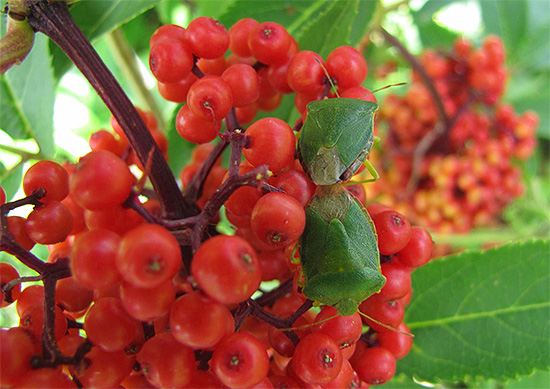
Generally speaking, entomology does not know such a species as a garden bug. In everyday life, this name is collectively referred to as all stink bugs that live in areas planted with cultivated plants. Sometimes these insects are also called garden bugs, which are the same thing (especially since for many summer residents a garden and a vegetable garden are one common area near the house).
On ordinary summer cottages of six acres, you can meet representatives of several dozen species of these insects with a very diverse body shape and color. Moreover, the garden bug can be both a pest that damages various plants, and a very useful exterminator of other harmful insects.
The photos below show typical garden bugs - berry shield bugs. These are one of those stink bugs that leave a cloying sweet smell on their hands and which for some reason some people are terribly afraid of:
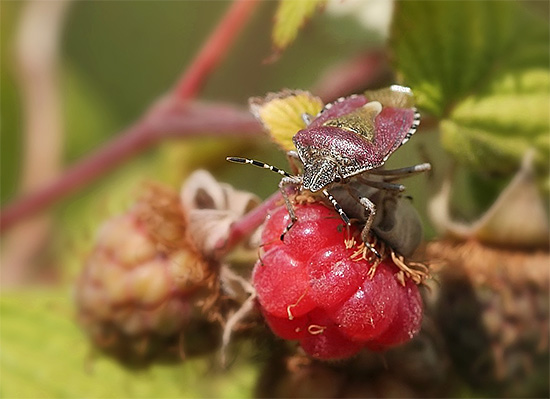
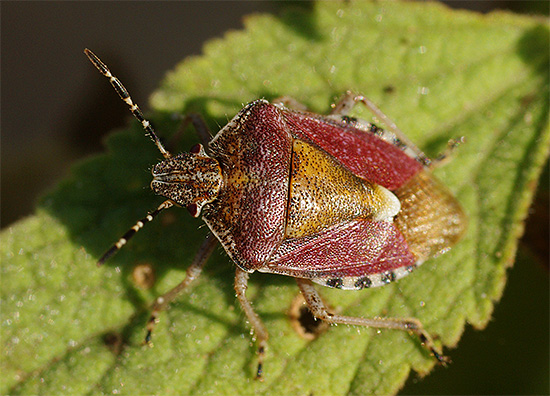
Review:
"Terrible insects. I've been afraid of them since childhood, I'm shaking all over when I see them! Sometimes they fly right into our house, then I can’t calm down all day. When I remember that nasty smell…”
Yana, St. Petersburg
Being bright and quite beautifully colored insects, garden bugs can be of sporting interest to the amateur naturalist:


Among them there are also dangerous agricultural pests.So, for example, some bugs in the garden damage cabbage and radish leaves, others parasitize pear trees and cucumbers in greenhouses.
All harmful garden bugs feed on plant sap by piercing the skin of leaves or soft stems and sucking out the nourishing juices. After that, brown spots appear on the leaves, increasing in size over time. The leaves of cucumbers and cabbage after such an attack often curl and dry out.
The photo below shows a common garden bug on a cabbage leaf:
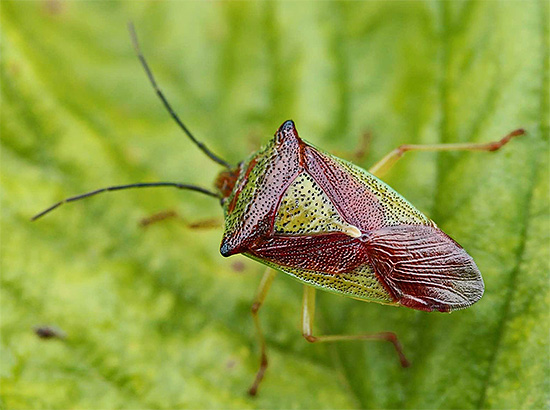
On a note
Bed bugs are the worst agricultural pests on a national scale. Yield losses from the activity of the so-called harmful turtle bug amount to thousands of tons of grain per year, and in some orchards up to a quarter of young trees die from pear bug attacks.
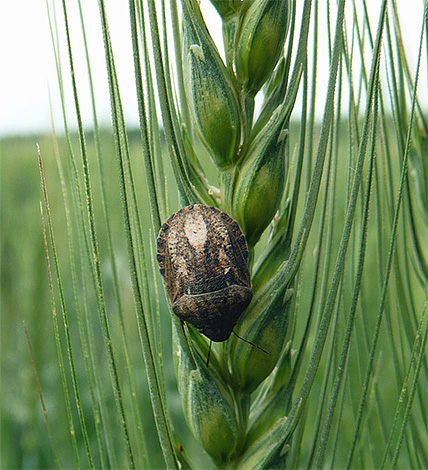
So, some garden bugs are pests. For this reason, it is useful for summer residents and gardeners to know how to get rid of them and prevent mass reproduction in the future. However, one should also be able to distinguish different types of bedbugs from each other: after all, some of them are useful predators that actively destroy aphids, thrips, caterpillars of harmful butterflies and Colorado beetle larvae. The fight against harmful garden bugs should not affect such helpers.
Harmful garden bugs
And further: Since bedbugs drink blood, can they carry AIDS or hepatitis from one person to another? Let's figure it out...
There are a lot of different types of harmful garden bugs. There are typical pests that parasitize specifically on fruit and berry crops, and there are also representatives that easily switch from feeding on wild plants to pests in gardens.
- A typical example is the green forest shield bug, known to summer residents as the green garden bug. It usually feeds on various wild and park trees and shrubs, but also readily penetrates garden plots and primarily damages raspberries. The photo shows an adult:

- Even more dangerous for the garden is the cruciferous bug, in science called northern Eurydema. This pest is similar in color to the common soldier bug, and feeds on cabbage, radish, radish, watercress and some other plants, often leading to their death;

- Pear bugs - have a very interesting appearance.They feed on apple trees, pears, quince, plums, apricots, cherries, and some others, with abundant reproduction, causing part of the foliage to fall off the trees and the fruit to die.

- The already mentioned berry shield is a pest of currants, raspberries, gooseberries, chokeberries. The photo below shows a representative of this species.

- The cucumber bug is one of the smallest. Its body length usually does not exceed 3 mm. It is kept mainly on the underside of the leaves of cucumbers, eggplants, tomatoes, sweet peppers, and therefore is hardly noticeable. Often infects greenhouses. It has a characteristic body shape and jumps well. In the photo - adult insects:

- The bug is a harmful turtle in gardens and vegetable gardens is quite rare. Its diet consists of cereals, and only sometimes this bug harms other plants. During mass reproduction, these insects can fly into areas from neighboring fields in large numbers.

- A whole family of bedbugs is a real scourge in the European part of Russia. These garden bugs can harm almost all plants, and due to their rather small size, they rarely attract attention. In the photo - a blind bug:

Can garden bugs be dangerous to humans?
Among the bugs found in gardens and orchards in Russia, there are no species that are dangerous to humans. "Domestic" herbivorous and even predatory bugs have a proboscis that is too soft, with which they simply cannot pierce human skin, that is, they cannot bite.
However, very rare cases are known when garden bugs still bite a person, but this is an exception to the rule.
As for bed bugs that feed on blood, they, of course, are not found in gardens and orchards.

On a note
In tropical countries, especially in South America, some triatomine bugs are found on agricultural lands, in gardens and vegetable gardens, where they parasitize various mammals and can even attack humans. These insects are carriers of the deadly Chagas disease.
Bed bugs: variety of types and colors
The stink bugs are a large family of bugs with over 4,000 species. In this family, there are species that are both harmful to horticulture and useful (predatory), so voracious that they are even bred at special stations in order to be released on agricultural land to destroy pests.
Shields are often brightly colored. For example, the photo shows an Italian bug:

And here is the red-footed shield bug, which can simultaneously harm trees and feed on other pests:
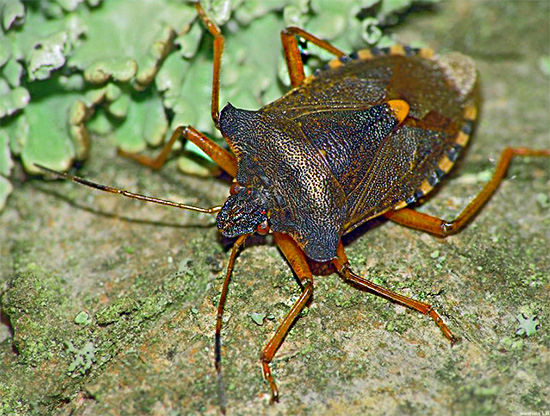
The shield boy, which has a very intricate coloration, is also one of the pests:
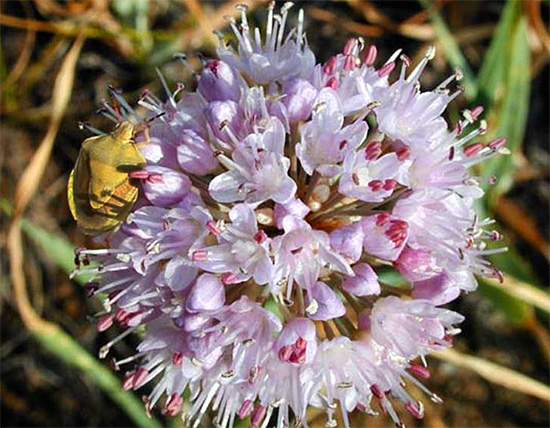
And this photo shows an earthen shield:
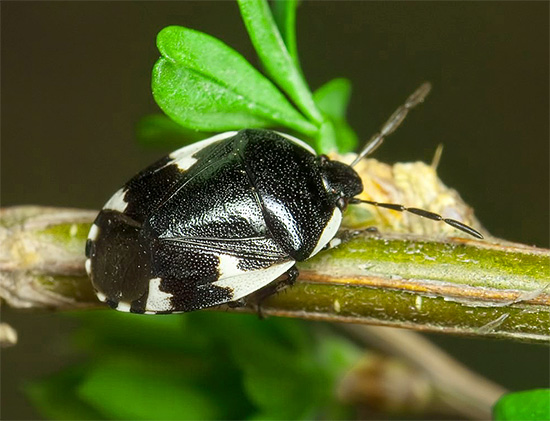
Predatory bugs - assistants in the fight for the harvest
Although quite a lot of different types of predatory bugs live in our country, but in general, due to their small number, they rarely seriously affect the populations of harmful insects. Predatory bugs are often found in gardens, but they usually do not attract attention to themselves.
In the photo - ringed predator, often found near apiaries. He hunts bees, waiting for them on flowers:
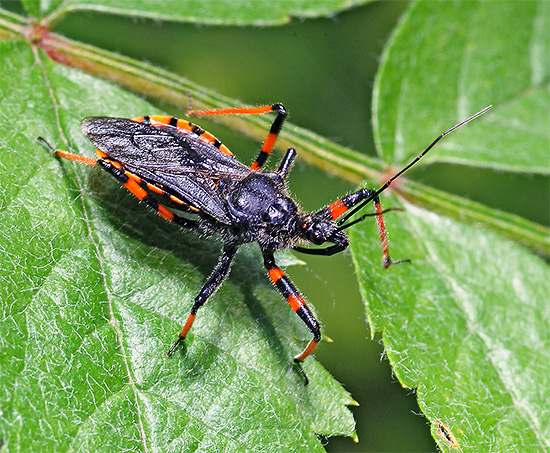
From North America to Europe, the bicentennial perillus bug (Perillus bioculatus) was repeatedly imported - a shield bug that very effectively exterminates larvae and adult Colorado potato beetles:
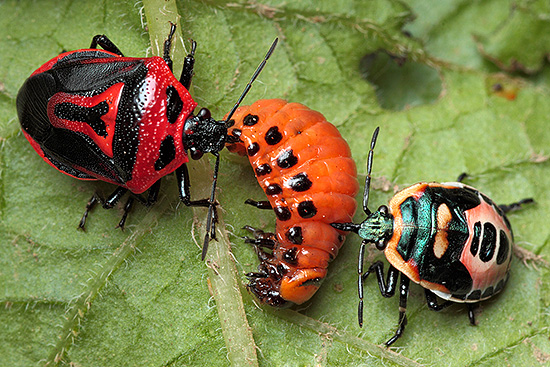
However, in the conditions of our country, this species does not tolerate wintering and dies.Only in the Krasnodar Territory were found populations acclimatized and successfully overwintering.
Picromerus is a bug that lives in the European part of Russia and in Europe. It actively eats almost any caterpillars and larvae, including scoops, sawflies and the Colorado potato beetle:

And another species - posidus - is specially released into the fields in the spring and does not hibernate. It can sometimes be found in the garden after such a mass release:
Red bugs ordinary, or soldiers
And of course, the most famous and common type of bedbugs in gardens and vegetable gardens is the so-called soldier bug, or common red bug. Sometimes these insects can be so numerous that they begin to harm plants, although they are usually harmless to the economy.
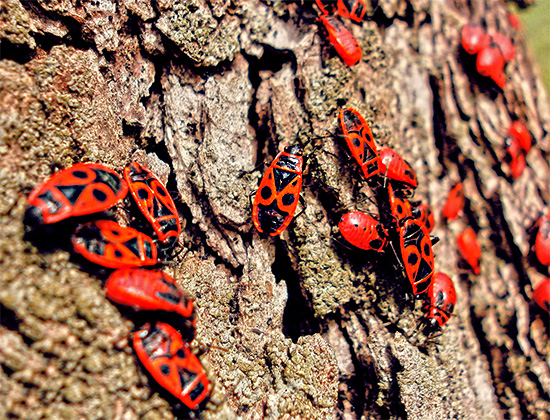
Soldiers are found both in gardens and near outbuildings. They feed on various plant and animal foods, mainly dead insects, rotting plant debris and fruits. Only in rare cases, red bugs can suck the juices of plants, including grapes and young trees, causing them harm.
Perhaps the main feature of soldier bugs is their coloniality. It is because of her that they are so noticeable on stumps, stones and just on the ground.
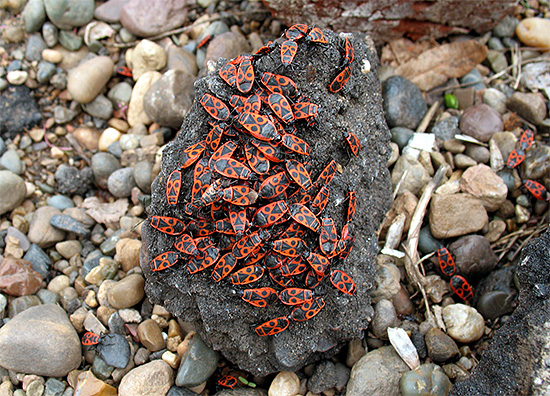
Dozens and hundreds of red insects are especially striking in early spring, when they are just starting their active life.
How to get rid of bed bugs in the garden
When meetings with harmful bugs in the garden become regular, and you notice leaves damaged by them on plants, it's time to start the fight, not waiting for the pests to cause even more damage.
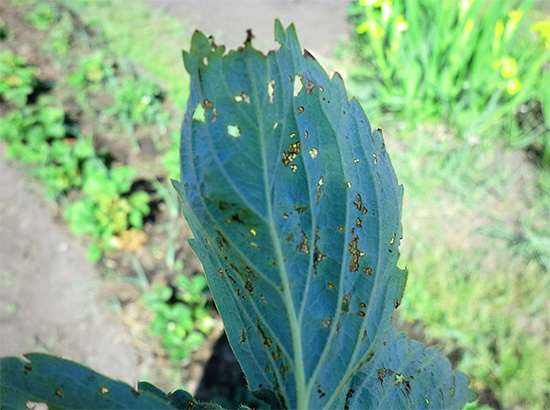
In greenhouses, the fight should begin immediately after the discovery of the first insects. This is especially true for the cucumber bug.
Methods of dealing with garden bugs are divided into chemical and agrotechnical. The former involve spraying the plants with insecticides (usually pyrethroids or organophosphorus), aiming to treat both leaf surfaces. It is recommended to use selective insecticides (for example, Aktara) - they do not have such a strong effect on beneficial bugs, but they actively destroy pests.
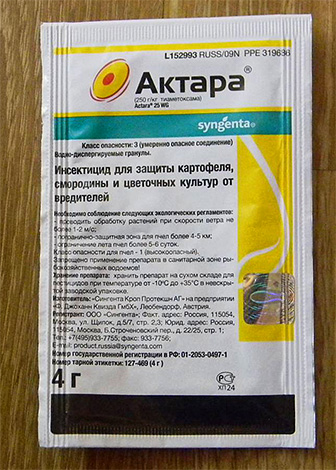
Agrotechnical measures to combat garden bugs are, first of all, the cleaning of fallen leaves, among which adults hibernate, plowing between rows or the entire area of the garden. If the site is small, and there are few trees and bushes on it, then it is reasonable to manually collect the leaves with the larvae deposited on them. This measure is safe for the garden and quite effective.
Pests of the garden and garden - bedbugs ...






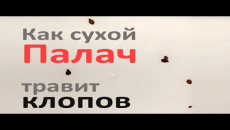
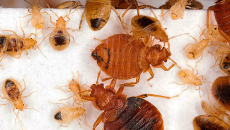

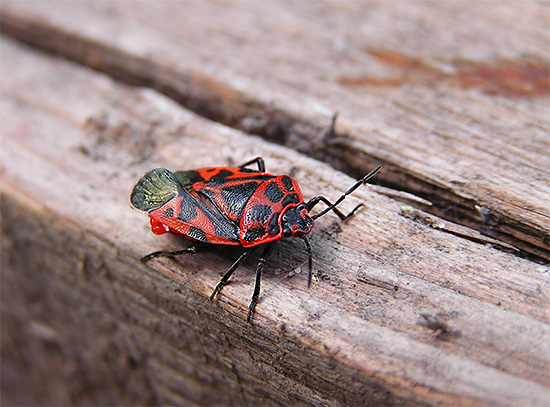
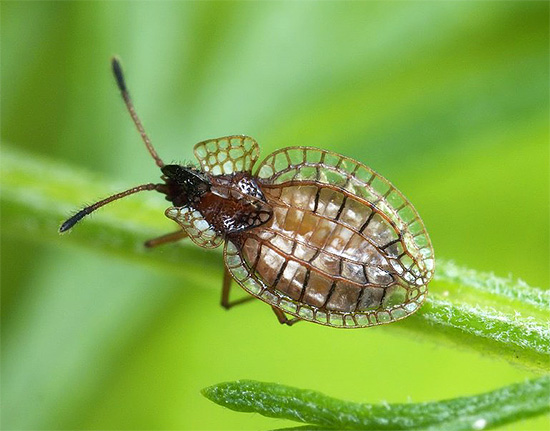
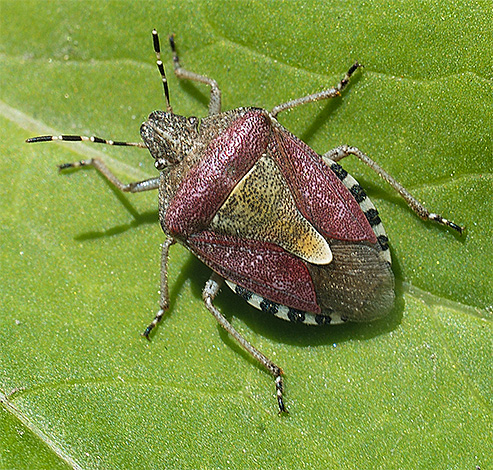
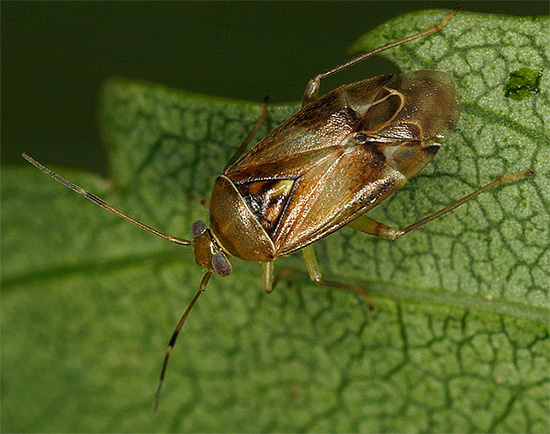
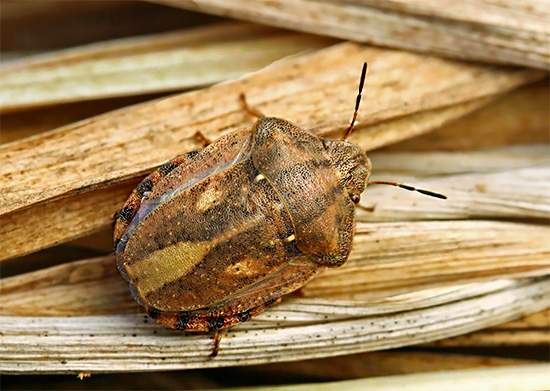
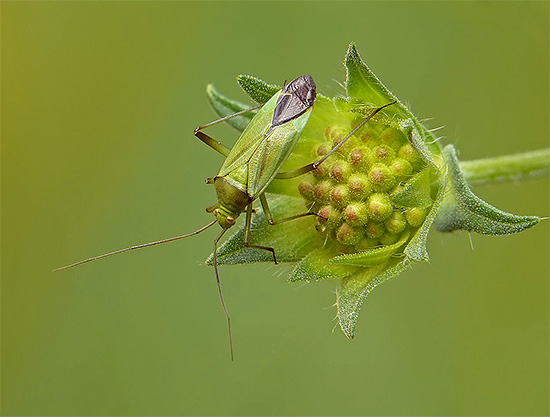
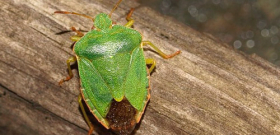


You write that garden bugs do not bite a person ... They bite me very much.Every time I come from the garden with at least one bite. Swelling, redness and terrible itching for many days. Whatever I don’t fly ... These are the green stink bugs. I'm getting ready to devote the next weekend to a merciless fight against them 🙂